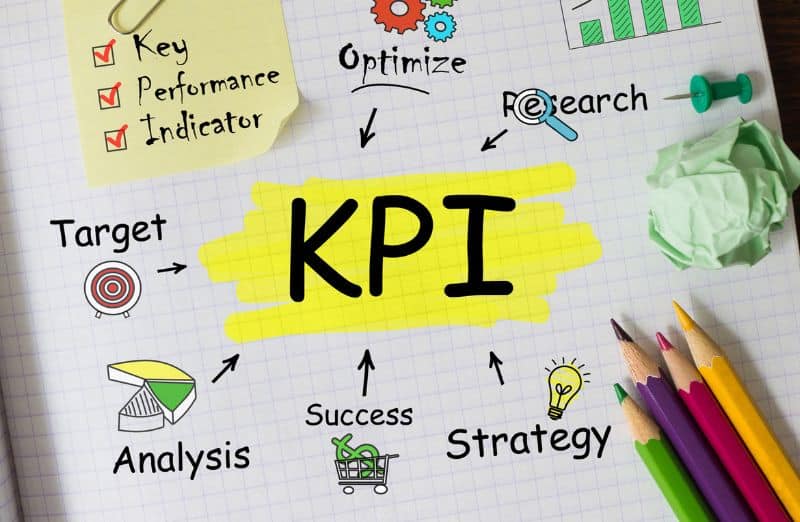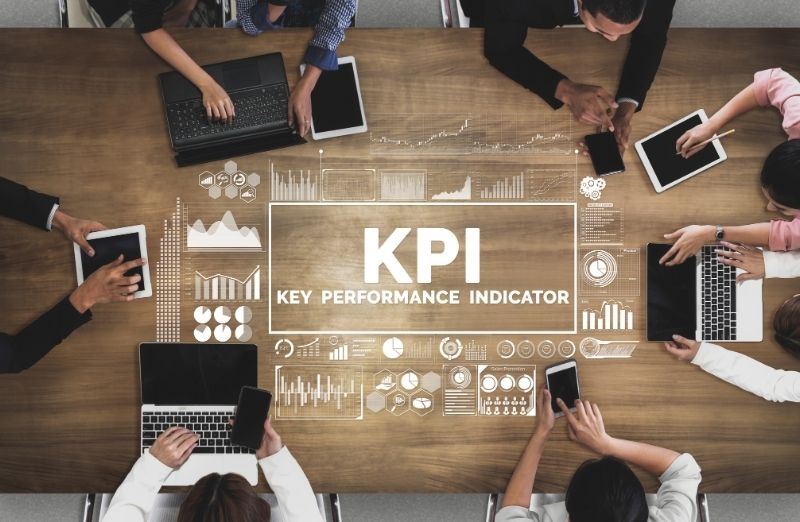In today’s fast-paced world of sales, knowing which metrics truly matter can transform a good team into a top performer. Sales KPIs (Key Performance Indicators) aren’t just numbers for sales managers—they’re daily motivators for sales reps and a map to sales growth for every sales leader. In the context of sales, a key performance indicator is a measurable value that demonstrates how effectively a sales team is achieving key business objectives. But which KPIs do your reps actually care about? And how can you make sales data meaningful and motivating for your entire sales team?
Let’s dive in with actionable tips to help you inspire, track, and celebrate the metrics that drive revenue growth. Focusing on critical sales KPIs that align with your business goals ensures you are measuring what truly matters for long-term success. Tracking progress on these KPIs not only provides clear direction but also helps motivate and guide your sales team toward achieving their targets.
Breaking Down Sales Performance
Sales performance is at the heart of every successful business, directly influencing sales revenue and long-term profitability. To truly understand and improve sales performance, companies rely on key performance indicators (KPIs) such as sales revenue, customer acquisition cost, and customer lifetime value. These metrics offer a clear window into the effectiveness of your sales process, helping sales managers and sales teams pinpoint what’s working and where there’s room for growth.
Tracking sales KPIs isn’t just about collecting numbers—it’s about gaining actionable insights that drive smarter sales strategies and more effective sales efforts. When sales managers focus on the right key performance indicators, they empower their teams to make data-driven decisions, optimize every stage of the sales process, and ultimately boost business growth. Whether you’re looking to increase customer lifetime value or reduce customer acquisition cost, understanding and tracking sales KPIs is essential for building a high-performing sales team and achieving your business goals.
The Shift from Vanity Metrics to Actionable KPIs
Sales professionals are increasingly frustrated with vanity metrics—numbers that look impressive but don’t drive meaningful results. Instead, they crave KPIs that provide clear insights into their sales tactics and progress, helping them close deals more efficiently. Actionable KPIs focus on real impact, like lead conversion rate and sales opportunities, empowering reps to prioritize efforts that truly move the needle.

By shifting from surface-level data to meaningful metrics, sales teams gain clarity and motivation. When reps understand how their daily activities contribute to company revenue and sales growth rate, they feel more engaged and accountable. Actionable KPIs also offer a clear picture of the team’s performance, helping everyone see how their efforts contribute to collective success. This shift transforms data from a reporting burden into a powerful tool for success.
Why Sales KPIs Matter
KPIs are the heartbeat of any sales team, guiding strategy and measuring success. According to Salesforce, high-performing sales teams are 1.5x more likely to leverage analytics to optimize sales tactics and improve sales team performance. This data-driven approach aligns sales goals with actual sales results, ensuring everyone is focused on what matters most.
Moreover, KPIs help sales leaders and reps spot trends, identify challenges, and capitalize on opportunities. Tracking sales KPIs consistently enables teams to adjust their sales process proactively, boosting total revenue and customer satisfaction. In essence, KPIs turn raw sales data into actionable insights that drive sustainable business growth.
Making KPIs Visible and Engaging
Digital dashboards from platforms like Spinify, HubSpot, and Salesforce bring sales data to life, making KPIs visible and engaging for the entire sales team. By visualizing metrics such as monthly sales growth and average purchase value, as well as other sales KPI examples like lead conversion rate, sales cycle length, and quota attainment, these tools help reps see their impact in real time, encouraging healthy competition and collaboration.
Engagement increases when sales representatives can track their own progress alongside team performance. Transparent dashboards foster accountability and motivation, turning KPIs into daily goals rather than abstract numbers. This visibility bridges the gap between individual effort and company revenue, energizing reps to consistently improve their sales efforts.
Sales Revenue: The Ultimate North Star
Sales revenue remains the ultimate north star KPI, reflecting the direct outcome of all sales activities. Tracking total sales revenue helps sales teams understand how their efforts translate into business success, making it the most straightforward and motivating metric to focus on. Net sales, a related metric, is often used as the denominator in profit margin calculations and plays a key role in assessing both profitability and overall sales effectiveness.
When reps see the connection between their sales calls, proposals, and closed deals with actual sales revenue, they gain a sense of purpose and urgency. This clarity drives better decision-making and prioritization, ensuring that every sales tactic contributes to sustainable company revenue growth.
Customer Acquisition Cost (CAC)
Customer Acquisition Cost (CAC) measures the investment required to win a new customer, encompassing marketing expenses, sales efforts, and related overhead. CAC is often calculated based on the number of net new customers acquired in a given period. When reps understand CAC, they become more conscious of closing deals efficiently and maintaining quality, balancing speed with value.
Highlighting CAC also fosters collaboration between sales and marketing teams, aligning their efforts to optimize spending and maximize return. The marketing team uses CAC and related metrics, such as average cost per lead, to evaluate campaign performance and optimize lead generation strategies. By focusing on reducing CAC while increasing sales opportunities, teams can boost profitability and ensure that customer acquisition supports long-term business goals.
Monthly Sales Growth

Tracking monthly sales growth not only motivates reps to hit—and exceed—targets but also provides a clear snapshot of how the sales team is performing over time. Companies like Google use this KPI to benchmark both team and individual improvement, setting realistic goals that fuel continuous progress. It’s a powerful way to celebrate wins and spot areas needing attention before they impact revenue.
By regularly monitoring monthly sales growth, sales leaders can align their strategies with market trends and internal performance, ensuring the team stays agile and focused. This KPI drives accountability and encourages reps to push for consistent gains, turning incremental progress into long-term success.
Customer Lifetime Value (CLV)
Customer Lifetime Value (CLV) reveals the long-term revenue potential of each customer, helping teams prioritize retention and upselling efforts. Average revenue per account or customer is a key component in calculating CLV and understanding overall customer value. When sales reps understand CLV, they shift focus from quick wins to nurturing lasting relationships, which drives sustainable revenue growth. Companies with strong CLV insights can tailor sales strategies to maximize customer value over time.
Knowing CLV empowers sales teams to identify high-value customer segments and invest their efforts wisely. This KPI also bridges sales and marketing, encouraging collaboration to enhance customer experiences and foster loyalty, ultimately boosting recurring revenue and profitability.
Sales Pipeline Value
A robust sales pipeline value is the lifeblood of any thriving sales organization. Salesforce, for example, tracks pipeline value closely to ensure reps maintain a healthy flow of prospects and opportunities. Each sales opportunity is assigned a value and probability, allowing teams to estimate potential revenue by weighting deals at various sales stages and calculating the likelihood of closing. This KPI helps sales leaders forecast revenue and allocate resources effectively, keeping the pipeline full and deals moving forward.
Monitoring pipeline value motivates reps to consistently prospect and engage with leads, preventing bottlenecks that stall growth. By understanding the worth of potential deals in the pipeline, teams can prioritize high-impact opportunities, improving conversion rates and accelerating sales velocity.
Monthly Recurring Revenue (MRR)
For SaaS and subscription-based businesses, Monthly Recurring Revenue (MRR) is a critical KPI that measures predictable, ongoing income. MRR is calculated based on the total revenue generated from paying customers each month. According to SaaStr, companies with strong MRR growth expand 30% faster year over year, highlighting the importance of this metric for sustainable success. Tracking MRR helps sales teams focus on customer retention and upselling.

MRR also provides valuable insights into the health of subscription models, enabling sales leaders to identify trends and adjust strategies proactively. By emphasizing MRR, reps are motivated to build long-term customer relationships that drive steady revenue streams and fuel business growth.
Average Sales Cycle Length
Average sales cycle length measures the time it takes to close deals, offering insights into sales efficiency. The quote to close ratio provides additional insight into the percentage of quotes that result in closed deals, helping teams evaluate sales effectiveness. HubSpot uses this KPI to refine strategies and shorten sales cycles, resulting in faster wins and more motivated reps. Understanding cycle length helps identify bottlenecks and optimize processes for quicker conversions.
Shortening the sales cycle not only accelerates revenue but also enhances customer satisfaction by delivering timely solutions. Sales teams that track this KPI can better forecast revenue and allocate resources, ensuring a balanced pipeline and sustained momentum throughout the sales funnel.
Customer Retention Rate
It’s easier (and cheaper) to keep a customer than acquire a new one. Tracking retention reveals the quality of your sales process and rep relationship-building skills. A high retention rate indicates that your sales team is not only closing deals but also nurturing long-term customer loyalty. Retention rate is a direct reflection of your sales team’s ability to maintain strong customer relationships and reduce churn, which fuels recurring revenue and lowers churn. It’s a vital metric that reflects the health of your customer relationships and the effectiveness of your post-sale engagement.
Focusing on retention encourages reps to prioritize existing customers, fostering trust and satisfaction. This mindset shift leads to upselling and cross-selling opportunities, maximizing customer lifetime value. When reps see the impact of retention on business growth, they become more motivated to build lasting partnerships rather than just chasing quick wins.
Average Purchase Value
Average purchase value helps reps upsell and cross-sell. Apple motivates its retail teams by publicly tracking and celebrating this KPI. By understanding how much each customer typically spends, reps can tailor their pitches to increase order sizes and boost overall revenue. Average purchase value can differ significantly depending on the business model, such as e-commerce versus SaaS, since each model has unique revenue structures and customer behaviors. This metric highlights the importance of quality interactions and personalized recommendations that encourage customers to buy more.
Tracking average purchase value also helps sales leaders identify which customer segments spend the most, enabling focused marketing campaigns and sales strategies. When reps see their influence on this KPI, they are incentivized to deepen customer relationships and enhance the buying experience, driving both satisfaction and profitability.
Sales Targets: The Motivation Factor
Clear, challenging, but achievable sales targets are the backbone of high-performing teams. They give reps a daily, weekly, and monthly finish line, creating a sense of purpose and urgency. Well-defined targets help reps focus their efforts on the right sales activities and prioritize high-impact deals, boosting productivity and morale.
When targets are aligned with individual strengths and team goals, they foster healthy competition and collaboration. Transparent communication of targets and progress through real-time dashboards keeps reps engaged and accountable. Celebrating milestones and achievements against these targets further motivates reps to push beyond expectations and contribute to sustained sales growth.
Conversion Rate by Sales Funnel Stage
Analyze conversion rates at every stage—prospect, meeting, proposal, close. Microsoft uses this data to coach reps on the most challenging points in the funnel. Understanding where prospects drop off helps sales leaders identify bottlenecks and tailor coaching to improve performance. Tracking conversion rates at each stage also reveals how many new customers are acquired and highlights where improvements can be made. This granular insight transforms vague sales challenges into actionable strategies.
By tracking conversion rates stage-by-stage, reps gain clarity on where to focus their efforts and how to adjust tactics. It empowers them to optimize each interaction, increasing the likelihood of moving prospects closer to closing. This data-driven approach enhances overall sales efficiency and drives higher win rates.
Total Number of Sales Activities
Calls, emails, meetings, and demos—each one matters. Reps who see activity tracked are more likely to stay focused and consistent. Monitoring these activities helps sales managers identify productive behaviors and areas needing support, enabling targeted coaching and resource allocation. Tracking activity at the sales rep level provides valuable insights into individual performance and highlights specific coaching needs for each sales representative.

Tracking activity volume also encourages reps to maintain momentum, especially during slower periods. When reps understand that consistent effort directly correlates with results, they are motivated to stay disciplined and proactive. This focus on daily sales activities builds a strong foundation for achieving larger sales targets and driving sustained revenue growth.
Monthly Sales Bookings
Monthly sales bookings provide a vital pulse-check on both your sales team’s momentum and the overall health of your company’s growth trajectory. This metric highlights the sales team’s ability to convert pipeline opportunities into committed revenue, reflecting the collective effectiveness and performance of the team. This KPI tracks the value of committed deals within a given month, giving clear insight into future revenue streams. It’s a powerful way to measure how well your sales pipeline is converting into actual business wins.
By monitoring monthly bookings, sales leaders can adjust strategies quickly, reallocating resources or coaching reps to improve performance. For sales reps, seeing monthly bookings progress in real time brings focus and motivation, turning abstract goals into tangible achievements that drive consistent sales growth.
Team Performance vs. Individual Performance
Comparing team and individual results on dashboards fosters a culture of collaboration, transparency, and healthy competition. When reps can see how their performance stacks up alongside their peers, it encourages accountability and inspires everyone to elevate their game. This dual focus ensures that team goals are met without losing sight of individual contributions.
Sales leaders benefit from this visibility by identifying high performers to recognize and those who might need extra support. It also helps balance workloads and promotes knowledge sharing, ultimately boosting the entire sales team’s ability to hit targets and sustain growth.
Average Profit Margin
Average profit margin is more than just a financial metric—it’s a key indicator of sales quality. Tracking this KPI ensures that while deals may be large, they are also profitable, protecting the company’s bottom line. It reminds reps and managers alike that bigger sales numbers aren’t always better if margins are razor-thin.
Focusing on profit margin helps sales teams prioritize deals that contribute meaningfully to business success rather than just chasing volume. This balance between revenue and profitability keeps sales efforts aligned with sustainable growth, ensuring the company thrives long-term.
Tracking Progress in Real Time
Live dashboards and instant alerts bring sales KPIs to life, letting reps see exactly where they stand and what actions are needed to hit their goals. This real-time visibility is especially critical for remote and hybrid teams, who rely on digital tools to stay connected and motivated across locations.
With progress updates at their fingertips, sales reps can adjust tactics on the fly, celebrate small wins, and maintain momentum throughout the sales cycle. For managers, it means timely intervention is possible, ensuring no opportunity slips through the cracks and the entire sales process stays on track.
Closed Deals and Win Rate
Reps thrive on tracking their closed deals and win rate because these metrics directly reflect their success in the field. Each closed deal represents the successful completion of the sales process and serves as a key indicator of sales effectiveness. Monthly leaderboards, like those used by LinkedIn’s sales teams, create a fun, competitive environment that highlights top performers and encourages everyone to raise their game.
Sharing these KPIs transparently not only motivates individuals but also fosters a team spirit where successes are celebrated and lessons learned from losses. This focus on results sharpens sales strategies and drives continuous improvement, fueling a high-performing sales culture.
Average Deal Size
Bigger isn’t always better—but tracking deal size helps reps focus on high-value opportunities and better prioritize their pipeline. Understanding average deal size enables sales reps to allocate their time and resources effectively, ensuring they’re pursuing deals that contribute most to the company’s revenue goals. It also helps sales managers set realistic targets and forecast revenue more accurately.
By analyzing trends in deal size, teams can identify which products or services drive larger sales and tailor their sales tactics accordingly. Celebrating wins with substantial deal sizes boosts morale and encourages reps to aim higher, creating a culture focused on quality over quantity.
Sales Compensation Metrics
Salespeople want to know: how do their KPIs affect their paycheck? Tie sales compensation directly to metrics like MRR, CLV, and targets hit. When compensation aligns with meaningful KPIs, reps are motivated to focus on activities that drive sustainable revenue, not just quick wins. This alignment ensures that efforts are rewarded fairly and transparently.
Clear compensation metrics also help sales leaders manage expectations and foster healthy competition. By linking pay to measurable outcomes, reps gain a clearer understanding of how their daily actions impact their earnings, encouraging consistent performance and dedication to the sales process.
Customer Relationship Management (CRM) Adoption

Salesforce and HubSpot both report that reps using CRM tools consistently see a 29% increase in sales (HubSpot Research). CRM adoption streamlines the sales process by centralizing customer data, tracking interactions, and automating routine tasks. This allows reps to focus on building relationships and closing deals rather than administrative work.
Beyond boosting individual performance, CRM systems provide sales leaders with real-time insights into pipeline health and team activity. Encouraging CRM adoption fosters collaboration and transparency, empowering the entire sales team to work smarter and achieve better results together.
Lead Response Time
Speed matters! Studies show reps who respond to leads within five minutes are 9x more likely to convert them (InsideSales.com). Rapid response demonstrates attentiveness and eagerness, making prospects feel valued and increasing the chance of engagement. It also helps reps beat competitors to the punch.
Improving lead response time requires efficient processes and clear accountability. Training and technology can help reps act quickly, turning early interactions into qualified opportunities. Highlighting this KPI motivates reps to prioritize responsiveness, which directly impacts conversion rates and overall sales success.
Customer Satisfaction Scores (CSAT)
Happy customers mean more referrals and repeat business. Amazon tracks CSAT as a critical sales KPI for its sales and support teams. Measuring customer satisfaction provides direct feedback on the sales experience, revealing strengths and areas for improvement. High CSAT scores correlate with loyalty and long-term revenue.
Sharing CSAT results with reps encourages a customer-centric mindset, emphasizing the importance of service quality alongside closing deals. When reps see the impact of their efforts on customer happiness, they’re motivated to nurture relationships, leading to better retention, upselling opportunities, and a stronger brand reputation.
Activity Ratios and Follow-Up Metrics
Tracking how many follow-ups it takes to close a deal provides crucial insight into sales effectiveness. Cisco reported a 20% increase in closed deals after improving follow-up rates, proving persistence pays off. When reps understand their follow-up activity’s impact, they become more disciplined and strategic in nurturing leads.
Beyond quantity, quality follow-ups matter. Timely, personalized outreach keeps prospects engaged and builds trust. Sharing follow-up metrics motivates reps to maintain momentum, avoid letting opportunities slip, and ultimately close more deals by turning consistent effort into measurable success.
Churn Rate
Churn rate measures the percentage of customers who stop doing business with you, signaling potential issues in customer satisfaction or product fit. High churn is a warning sign that prompts sales reps to focus on strengthening relationships and addressing client concerns proactively.
By sharing churn data transparently, reps gain awareness of the importance of retention alongside acquisition. This encourages a customer-centric mindset, motivating the team to nurture loyalty, upsell effectively, and contribute to sustainable revenue growth.
Opportunities Won vs. Lost
Highlighting both wins and losses offers a balanced view of sales performance. Celebrating wins boosts morale and reinforces effective sales behaviors, while analyzing losses uncovers areas for improvement and sharper sales tactics.
This dual approach fosters a culture of continuous learning. When reps see what works and where deals fall through, they can refine their strategies, focus on high-potential leads, and increase their overall close rate, driving better results for the entire sales team.
Opportunity Age
Long-stalled opportunities clog the sales pipeline and drain valuable resources. Tracking average opportunity age gives reps visibility into deals that need immediate attention, helping them prioritize and re-engage prospects before they go cold.
Reducing opportunity age accelerates the sales cycle and improves forecasting accuracy. When reps are accountable for aging deals, they stay proactive, maintain pipeline health, and keep momentum moving toward closing, which benefits both individual and team performance.
Forecast Accuracy
Accurate sales forecasting builds trust across the entire sales organization. IBM emphasizes this KPI as essential for aligning expectations, planning resources, and setting realistic sales targets that everyone believes in.
Sharing forecast accuracy results encourages reps to input reliable data and engage in honest pipeline reviews. This transparency strengthens the sales process, enabling smarter decision-making and helping teams hit their revenue goals consistently.
Sales Funnel Leakage
Where are leads dropping out? Identifying sales funnel leakage is crucial to understanding where potential customers lose interest or face obstacles. Sharing this KPI with reps encourages collective problem-solving, turning the challenge into a team effort to plug the leaks and improve conversion rates. When reps see how their actions impact each stage, they become more proactive in nurturing leads and addressing bottlenecks.
By tracking funnel leakage, sales leaders can pinpoint specific stages that need attention, whether it’s initial contact, proposal, or closing. This transparency fosters collaboration, enabling the team to optimize the sales process and ultimately boost overall sales effectiveness.
Repeat Purchase Rate
Reps love to see customers come back because it reflects trust and satisfaction. Repeat purchase rate measures how often customers return, motivating reps to provide excellent service and maintain ongoing communication. When reps understand the value of nurturing existing relationships, they focus on upselling and cross-selling, driving sustainable revenue growth.
High repeat purchase rates also signal strong customer loyalty, offering insights into product success and market fit. Sharing this KPI inspires reps to build long-term partnerships, turning one-time buyers into brand advocates who contribute to steady, predictable sales performance.
Sales Leadership and Strategy
Great sales performance doesn’t happen by accident—it’s the result of strong sales leadership and a well-crafted sales strategy. Sales leaders play a pivotal role in setting ambitious yet achievable sales targets, developing sales strategies that align with business goals, and providing ongoing support to their sales teams. By regularly tracking sales metrics like monthly sales growth, average purchase value, and sales cycle length, sales leaders can spot trends, identify challenges, and make informed decisions that drive sales growth.
Effective sales leadership goes beyond just setting targets. It’s about fostering a culture of continuous improvement through regular team building activities, constructive feedback, and personalized coaching. When sales reps feel supported and challenged, they’re more likely to stay motivated and deliver their best performance. By analyzing sales data and adjusting sales strategies as needed, sales leaders can improve customer retention, optimize the sales cycle, and ensure the entire sales team is working toward shared business goals. Ultimately, strong leadership and strategy are the foundation for sustained sales team performance and long-term business success.
Measuring KPIs with Spinify
Spinify’s gamified dashboards transform sales data into engaging, actionable insights, making KPI tracking fun and rewarding. By turning metrics into real-time competitions and celebrations, Spinify motivates reps to stay focused and push their limits. This approach helps reps see their progress clearly and understand how each action contributes to team success.
With Spinify, managers can customize KPIs to align with business goals, ensuring that the metrics reps care about are front and center. This dynamic visualization fosters a culture of transparency and motivation, empowering sales teams to achieve their targets with enthusiasm and accountability.
Sharing KPIs Transparently
Transparency builds trust and ownership. Companies like Google and Microsoft openly share sales KPIs, allowing reps to see how their work directly impacts business objectives. This openness fosters a sense of responsibility and encourages reps to take control of their performance, driving accountability and continuous improvement.
When KPIs are shared transparently, it breaks down silos and promotes collaboration across teams. Reps can benchmark their progress, celebrate wins together, and learn from challenges. This culture of openness transforms KPIs from abstract targets into shared goals that energize and unite the entire sales team.
Inspire Performance With the Right KPIs (and Spinify!)
In conclusion, sales performance is a cornerstone of business success, and tracking the right sales KPIs is essential for optimizing sales efforts and driving revenue growth. By focusing on key performance indicators such as sales revenue, customer acquisition cost, and customer lifetime value, sales managers can uncover opportunities for improvement and craft effective sales strategies that deliver results.
When sales reps see KPIs that actually matter, motivation and sales performance skyrocket. The right metrics, shared the right way, will energize your entire sales team. Spinify helps you show these KPIs in real-time, fun, and rewarding ways that turn everyday sales efforts into measurable business growth.
Ready to make KPIs a powerful motivator for your sales team? Discover key sales enablement trends for 2024Try Spinify today and see how data-driven recognition can inspire your sales professionals!




